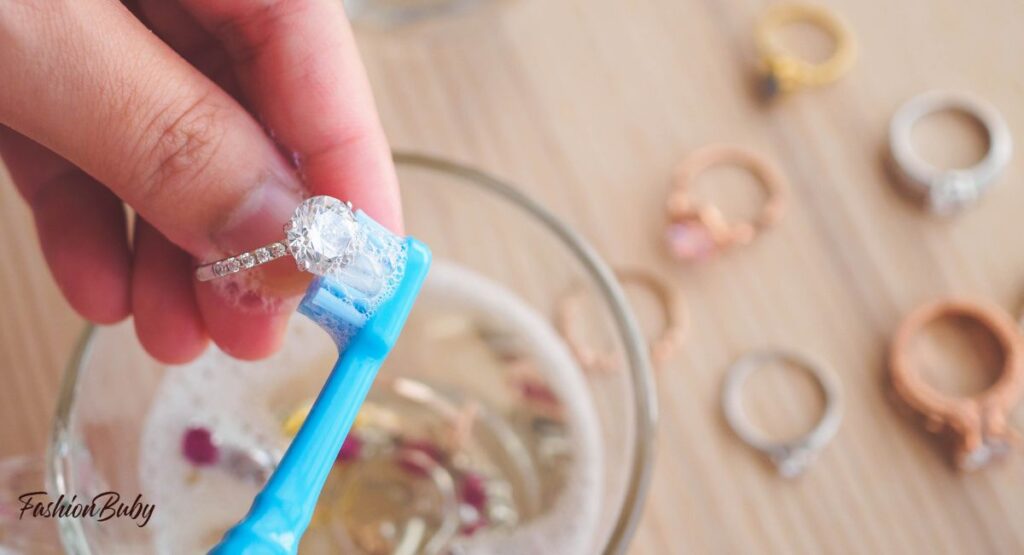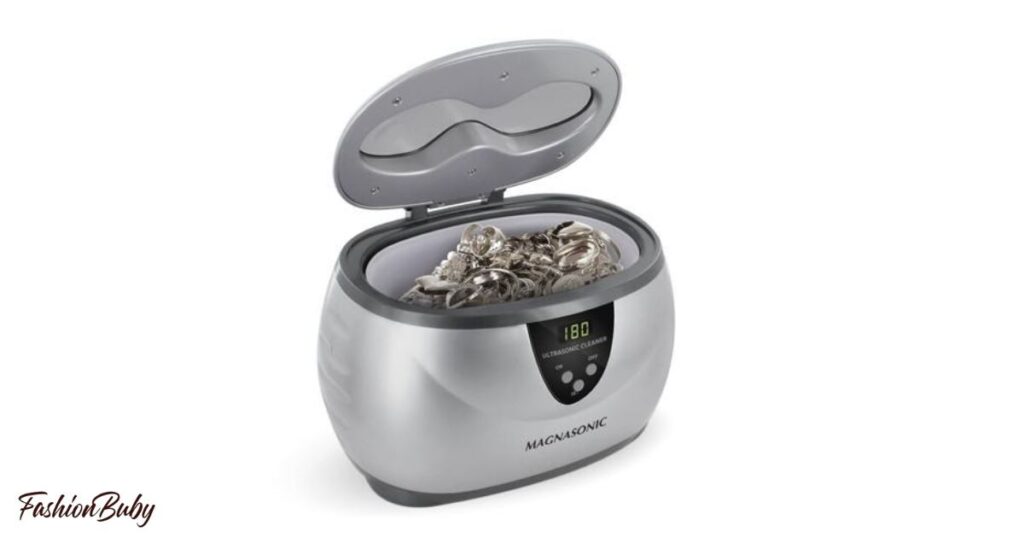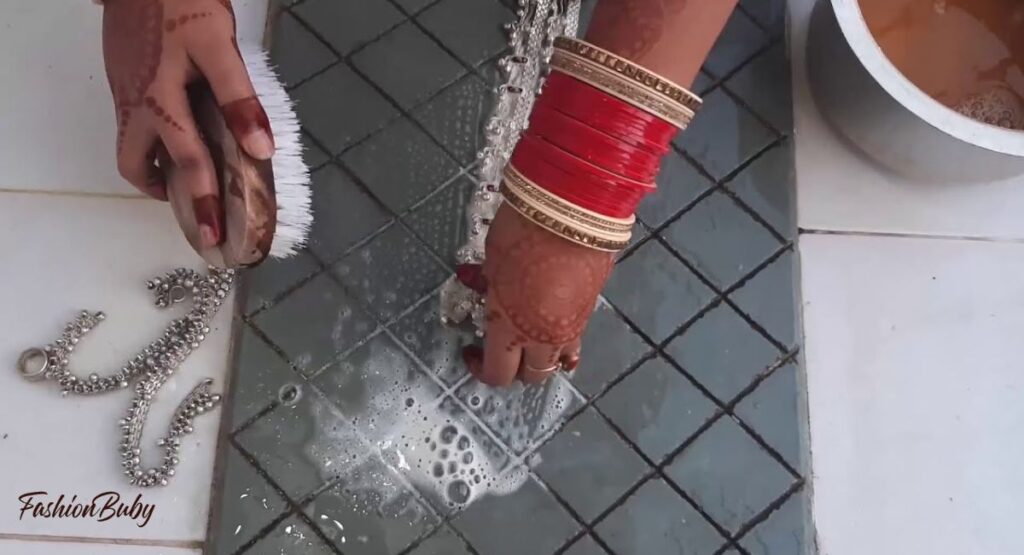Jewelry holds a special place in our hearts, symbolizing cherished memories and milestones. Whether it’s a dazzling diamond ring, a beloved gold necklace, or a treasured family heirloom, keeping your jewelry sparkling is essential. Over time, exposure to dust, oils, and lotions can dull their brilliance.
But where do you start? The good news is that you don’t need to be a professional jeweler to restore your pieces. With a few simple tips and tricks, and using common household items, you can easily clean your jewelry at home.
Ready to learn how to make your jewelry sparkle again? Read on as we guide you through the best methods for cleaning different types of jewelry. Join us and discover the secrets to keeping your treasured pieces as radiant as the day you received them!
Simple Tips and Tricks

Keep your jewelry looking its best with these straightforward tips: Inspect pieces for damage before cleaning to prevent further harm. Wash with warm water and mild soap, using a soft toothbrush for tough spots. For a deeper clean, use an ultrasonic cleaner, but avoid it for delicate items.
Remove tarnish with a polishing cloth or silver dip, but use the latter sparingly. Avoid harsh chemicals and abrasive cleaners. Clean silk thread necklaces gently with a damp cloth and store all jewelry separately in a cool, dry place to prevent scratches and tarnishing.
Related Post: How to Achieve a Dewy Makeup Look: A Step-by-Step Guide
Check Your Jewelry
Before you start cleaning, inspect each piece of jewelry carefully. Look for any loose stones, cracks, or other damage. This preliminary check helps prevent any further harm during cleaning. If you spot any issues, it’s best to get your jewelry repaired by a professional before cleaning.
Pay special attention to settings and clasps where stones might be loose. This ensures that you won’t accidentally dislodge any stones or exacerbate existing issues while cleaning. Regular inspections also help maintain the overall condition and longevity of your jewelry, keeping it looking its best.
For clean jewelry Give It a Wash
Begin the cleaning process by washing with a solution of warm water and mild dish soap. Soak the pieces for a few minutes to loosen dirt and grime. Use a soft toothbrush to gently scrub hard-to-reach areas, like under settings and around stones. Be cautious with delicate pieces to avoid scratching.
After scrubbing, rinse thoroughly under warm water to remove any soap residue. Pat it dry with a soft cloth to prevent water spots and tarnishing. This simple method effectively cleans most types of jewelry without harsh chemicals.
Try an Ultrasonic Cleaner

An ultrasonic cleaner offers a deep and thorough cleaning for your jewelry. These devices use high-frequency sound waves to dislodge dirt and grime from hard-to-reach places. To use an ultrasonic cleaner, follow the manufacturer’s instructions precisely, placing your jewelry in the device’s basket and selecting the appropriate cleaning cycle.
Ensure that the cleaner’s solution is suitable for your type of jewelry. After cleaning, rinse the pieces with water and dry them with a soft cloth. This method is effective for many types of jewelry but requires careful usage to avoid potential damage
BUT: Don’t Always Use an Ultrasonic!
While ultrasonic cleaners can be highly effective, they are not suitable for every type of jewelry. Avoid using them on delicate pieces, such as those with loose stones or intricate settings, as the vibrations can cause further damage.
Porous gemstones like pearls, opals, and emeralds are particularly vulnerable and should not be cleaned with ultrasonic devices. Always check the manufacturer’s recommendations for your jewelry before using an ultrasonic cleaner. In cases of doubt, opt for a gentler cleaning method to ensure the safety and integrity of your precious pieces.
Remove Tarnish with a Polishing Cloth
For tarnished jewelry, a polishing cloth can be a simple yet effective solution. Gently rub the cloth over the surface of your jewelry to remove tarnish and restore its shine. Polishing cloths are designed with special compounds that clean and polish without scratching.
Be sure to use a clean section of the cloth to avoid transferring tarnish from one piece to another. This method works well for items with minor tarnish and is suitable for most types of metals, including silver and gold. Regular polishing helps maintain the luster and appearance of your jewelry.
Use Silver Dip Instead
For silver with heavy tarnish, a silver dip can offer a more potent solution. Follow the product instructions carefully, typically dipping for just a few seconds. After dipping, rinse the jewelry thoroughly with water to remove any chemical residue, then dry it with a soft cloth.
Silver dips are effective at removing stubborn tarnish but can be harsh on intricate designs or jewelry with soft stones. Use silver dip sparingly and avoid overuse to prevent potential damage to the metal and its finish.
Don’t Always Use Silver Dip!
While silver dip can effectively remove tarnish, it is not always the best choice for every piece. Avoid using silver dip on delicate or intricately designed , as the harsh chemicals can damage the metal or affect the design.
It’s also unsuitable for jewelry with soft stones or pearls. Overuse of silver dip can erode the metal and reduce the quality of your jewelry. Use this method cautiously and consider alternative cleaning methods for more delicate items. Regular maintenance and gentle cleaning can help preserve the beauty and longevity of your silver jewelry.
Avoid Harsh Cleaning

When cleaning your jewelry, avoid using abrasive cleaners or harsh chemicals like bleach. These substances can scratch and damage metals, erode finishes, and negatively impact stones. Stick to mild soaps and gentle cleaning solutions designed specifically for jewel. Always test any cleaning product on a small, inconspicuous area first to ensure it does not cause damage.
For most jewelry, a soft cloth and mild detergent are sufficient. Maintaining a gentle cleaning routine helps protect your jewelry’s appearance and ensures it remains in good condition for years to come.
Cleaning Silk Thread Necklaces
Silk thread necklaces require special care to avoid damaging the delicate material. Do not soak them in water as it can weaken the silk and lead to potential breakage. Instead, gently wipe the thread with a slightly damp cloth to remove any surface dirt.
Allow the necklace to air dry completely before storing it. Regular cleaning helps maintain the necklace’s appearance and prevents the silk from becoming brittle. For best results, store silk thread necklaces flat to avoid tangling and ensure they remain in excellent condition.
Store Carefully
Proper storage is essential for preserving the beauty and condition of it. Store each piece separately in a soft pouch or lined box to prevent scratches and tangles. Keep it in a cool, dry place away from direct sunlight and moisture to avoid tarnishing and damage.
For items with delicate stones or intricate designs, consider using individual compartments or anti-tarnish pouches. By ensuring you stored properly, you maintain its shine and extend its lifespan, keeping it looking beautiful for years.
Frequently Asked Questions
How often should I clean my jewelry?
Clean your jewelry every few months or when it starts to look dull. Regular cleaning helps maintain its shine and prevents buildup.
Can I use toothpaste to clean my jewelry?
Avoid using toothpaste as it can be too abrasive and scratch your jewelry. Stick to mild soap and water for a safer clean.
Is it safe to clean jewelry with a toothbrush?
Yes, a soft toothbrush is ideal for cleaning hard-to-reach areas. Just make sure it’s clean and soft to prevent scratching.
How can I prevent my silver jewelry from tarnishing?
Store silver jewelry in anti-tarnish pouches or clothes and keep it in a dry, cool place. Regular polishing also helps minimize tarnish buildup.
What should I do if my jewelry has loose stones?
Take your jewelry to a professional jeweler for repair before cleaning. Cleaning with loose stones can cause further damage.
CONCLUSION
Knowing how to clean jewelry effectively ensures that your pieces remain as stunning as the day you first wore them. By following simple yet essential steps—such as inspecting for damage, using the right cleaning methods, and avoiding harsh chemicals—you can preserve the beauty and longevity of your jewelry.
Whether you choose to wash, use an ultrasonic cleaner, or employ polishing techniques, proper care will keep your treasures sparkling and in excellent condition. Embrace these tips to maintain the allure of your jewelry and enjoy its brilliance for years to come.












